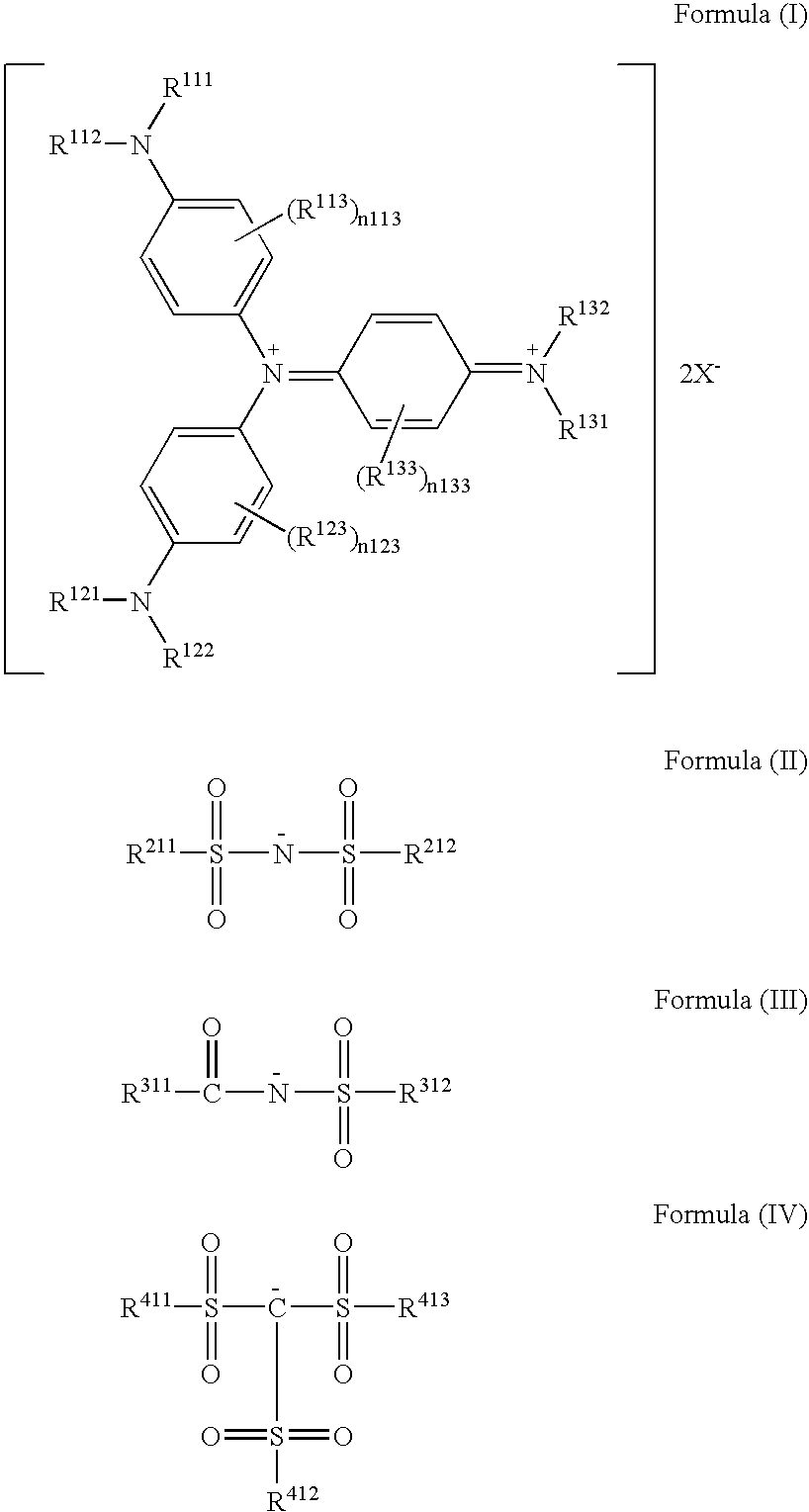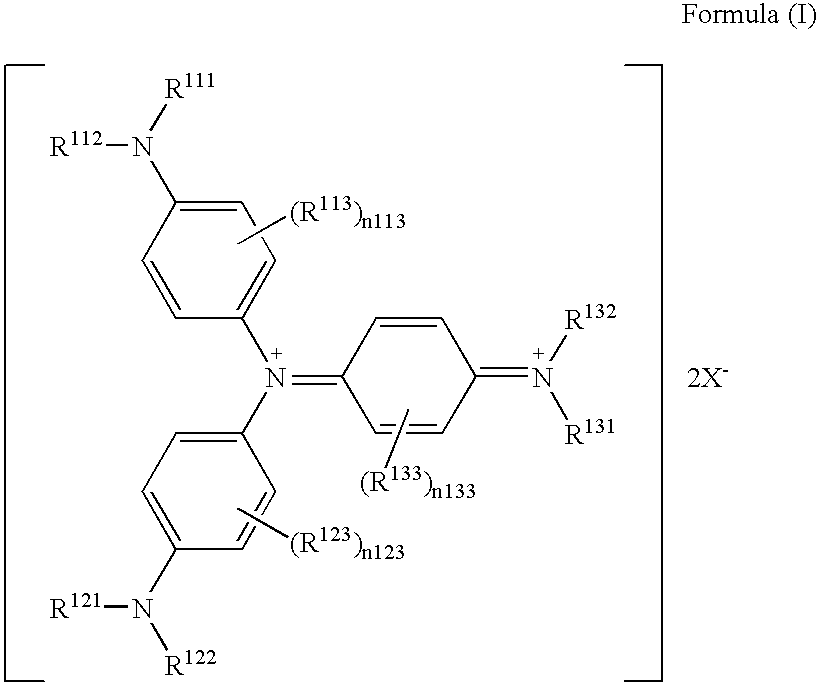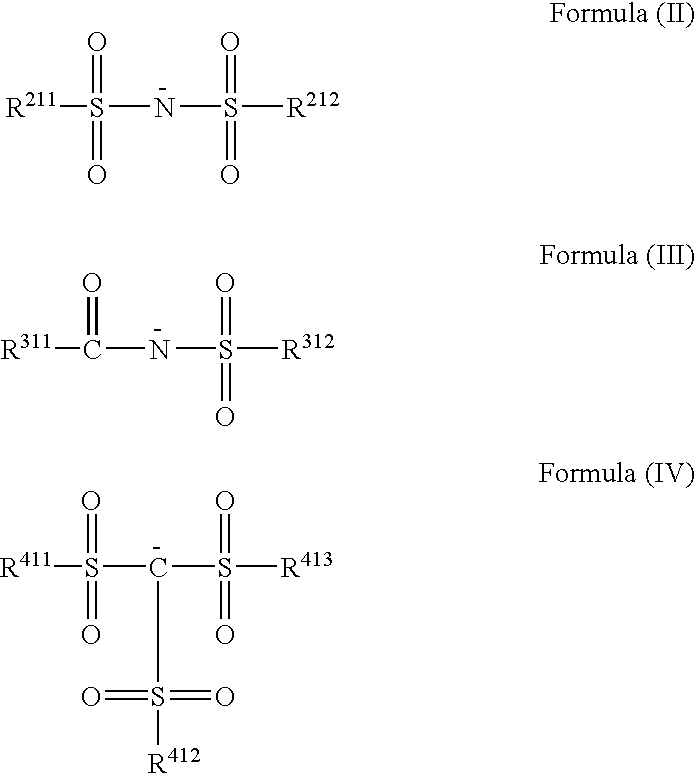Triarylamine derivative
- Summary
- Abstract
- Description
- Claims
- Application Information
AI Technical Summary
Benefits of technology
Problems solved by technology
Method used
Image
Examples
example 1
Synthesis of Compound 5
[0109]Into 40 ml of DMF was completely dissolved 5 g of tris(4-di(n-butyl)aminophenyl)amine, and the solution was heated and stirred at 60° C. To this was added 15 g of a silver salt of bis(trifluoromethanesulfonyl)imide, and the mixture was heated and stirred at 60° C. for 3 hours. The reaction solution was filtered to remove insoluble components, 200 ml of water was added to the reaction solution, and precipitated crystal was collected by Alteration. The resulting crystal was washed with water, and dried to obtain 8.6 g (91%) of a target compound 5.
[0110]When a mass spectrum was measured, M+ was 627. When an absorption spectrum was measured, a maximum absorption wavelength was λmax=916 nm (dichloromethane).
[0111]The results of elemental analysis are shown in Table 5.
example 2
Synthesis of Compound 10
[0112]In the same manner as in Example 1 except that tris(4-di(iso-amyl)aminophenyl)amine was used in place of tris(4-di(n-butyl)aminophenyl)amine, 8.5 g (95%) of a target compound 10 was obtained.
[0113]When a mass spectrum was measured, M+ was 711. When an absorption spectrum was measured, a maximum absorption wavelength was λmax=917 nm (dichloromethane).
[0114]The results of elemental analysis are shown in Table 5.
example 3
Synthesis of Compound 14
[0115]In the same manner as in Example 1 except that tris(4-bis(3-cyanopropyl)aminophenyl)amine was used in place of tris(4-di(n-butyl)aminophenyl)amine, 8.0 g (89%) of a target compound 14 was obtained.
[0116]When a mass spectrum was measured, M+ was 693. When an absorption spectrum was measured, a maximum absorption wavelength was λmax=917 nm (dichloromethane).
[0117]The results of elemental analysis are shown in Table 5.
PUM
 Login to View More
Login to View More Abstract
Description
Claims
Application Information
 Login to View More
Login to View More - R&D
- Intellectual Property
- Life Sciences
- Materials
- Tech Scout
- Unparalleled Data Quality
- Higher Quality Content
- 60% Fewer Hallucinations
Browse by: Latest US Patents, China's latest patents, Technical Efficacy Thesaurus, Application Domain, Technology Topic, Popular Technical Reports.
© 2025 PatSnap. All rights reserved.Legal|Privacy policy|Modern Slavery Act Transparency Statement|Sitemap|About US| Contact US: help@patsnap.com



